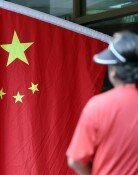KIF projects 6.2% gain in GDP for 2001
KIF projects 6.2% gain in GDP for 2001
Posted November. 01, 2000 19:53,
The nation¡¯s economy next year is expected to enter the downswing phase in earnest, with gross domestic product growth projected at 6.2%, far below this year¡¯s estimated 9.0%.
In addition, consumer price growth for next year is projected at 3.5%, slightly higher than this year¡¯s 2.5%, while the current account surplus will sharply decline to US$5.52 billion compared to this year.
Korea Institute of Finance (KIF) reported the economic outlook for 2001 at a seminar Wednesday on financial trends at the KFB building in Myongdong, Seoul.
The KIF forecast that private consumption next year will rise by 5.7%, year-on-year, lower than the rate registered this year. Facility investment, which has shown a robust gain in the past two years, is expected to be limited to a 9.0% growth, year-on-year, in line with slower overall economic growth.
Despite continued growth in terms of volume, exports next year are expected to record an 8.1% gain, year-on-year, in terms of amount, staying at a level similar to this year¡¯s. Propelled by sustained increases in imports of info-communication equipment and facilities, next year¡¯s imports are forecast to show an 11.7% gain, year-on-year. Accordingly, as the current account surplus is projected at US$5.52 billion for next year, external factors are likely to contribute less than before to the nation¡¯s overall economic growth.
Due to hikes in international raw material prices, including crude oil prices, consumer price growth next year is projected at 3.8% in the first half and 3.3% in the second half, thus recording a yearly growth of 3.5%.
Meanwhile, despite possible capital exodus following enforcement of the scheduled second foreign exchange liberalization, the partial deposit guarantee system and the consolidated taxation for financial income, the won-dollar exchange rates will stay within the 1,070-to-1,080 won range next year, the KIF forecast. The financial institute explained that if restructuring bears visible fruits, it will boost direct and indirect investments, thus helping stabilize the foreign exchange rates.
The KIF also projected next year¡¯s average interest rates at 8.8%, a little bit lower than those of this year, as capital demand required by local companies is not likely increase by a large amount and the Bank of Korea will likely raise the rates only slightly.
When the local financial market jitters are dealt with, the Korea Composite Stock Price Index will hover at the 600-800 range in the first half and the 800-1,000 range in the second half, the KIF projected.





![먼지인 줄 알았더니…서랍 구석 ‘해충 배설물’ 습격 [알쓸톡]](https://dimg.donga.com/c/138/175/90/1/wps/NEWS/IMAGE/2025/12/19/133001422.3.png)
![“아무리 씻어도 안 빠져” 김치통 냄새, □□으로 싹 [알쓸톡]](https://dimg.donga.com/c/138/175/90/1/wps/NEWS/IMAGE/2025/12/18/132993861.3.jpg)
